



Cataracts are a natural part of the aging process. They affect millions of Americans as we all get older. Cataracts are one of the most common causes of vision loss. They are characterized by a progressive clouding of your eye's natural lens. In most cases, cataracts develop gradually, but as they progress, they begin to affect your activities of daily living. Most patients complain of blurry or cloudy vision, glare problems, difficulty driving at night, and problems with reading fine print. It becomes harder to see your golf ball or to thread a needle, impairing your ability to enjoy the things that you do day to day.
Cataract surgery is one of the most common and successful surgeries performed in the United States. Over 3 million surgeries take place every year in the U.S. It is highly dependent on the surgeon's surgical skill and volume of experience.
All techniques used in cataract surgery involve the removal of the cloudy lens, and then the replacement of the cataract with an acrylic plastic intraocular lens. Modern advancements in cataract surgery have included the development of new types of intraocular lenses. Until recently, all cataract surgeries were completed manually. Laser cataract surgery was introduced in 2009, and has been used successfully in hundreds of thousands of eye surgeries.
Traditional surgery involves using a metal or diamond blade to create an incision through the clear cornea. This is followed by the manual creation of an opening in the lens capsule, or clear bag that holds the cataract in place. This is known as an anterior capsulotomy, one of the most difficult parts of the surgical procedure. The centration, size, and precision of the anterior capsulotomy can have an impact on visual outcomes after cataract surgery. Complications during the creation of the capsulotomy can result in poorer long-term outcomes.
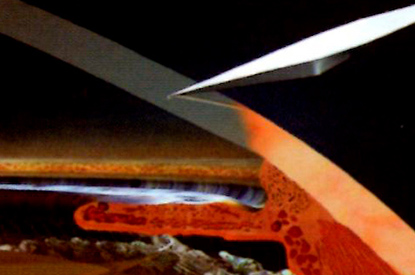
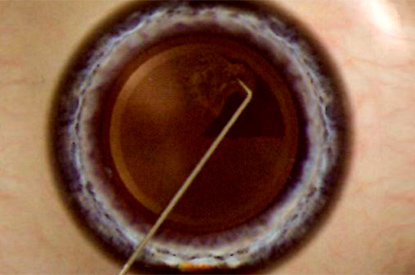
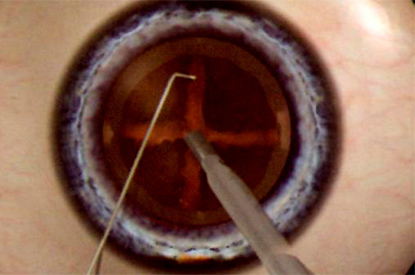
After the creation of the capsulotomy, a phacoemulsification probe or "phaco probe" is inserted into the eye. It uses ultrasonic energy to break the cataract into small pieces and removes them from the eye at the same time. The intraocular lens is then placed inside the capsular bag.
Laser cataract surgery involves using advanced femtosecond laser technology to increase the precision of cataract surgery. The laser uses a sophisticated 3-D image of your individual eye's anatomy, creating a customized surgical plan specifically for you. The laser can be used for creation of the cataract incision, anterior capsulotomy, lens fragmentation, and in the reduction of astigmatism using corneal relaxing incisions. The cataract incision that the laser creates is triplanar and designed to be self-sealing to reduce the risks of infection.
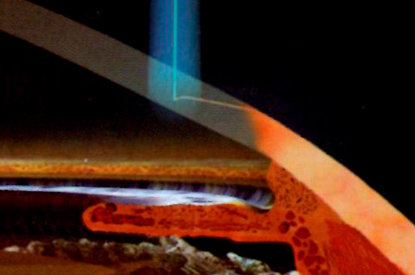
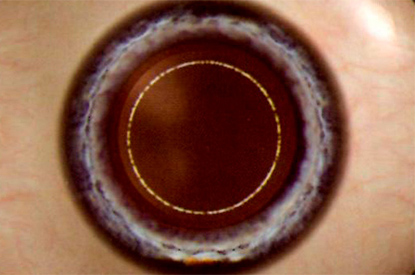
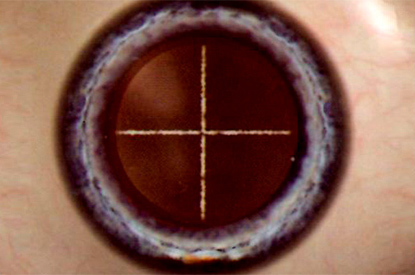
Perhaps one of the most important uses of the laser is in the creation of a well centered and precise capsulotomy. Studies have shown that anterior capsulotomies created by lasers lead to a better intraocular lens centration and reduced intraocular lens tilting. This is especially important when using today's advanced technology lenses such as multifocal and toric lenses. Visual outcomes with advanced technology lenses are more impaired by tilt and decentration.
The laser is then used to fragment and soften the cataract prior to its removal with phacoemulsification. Another important benefit seen in laser cataract surgery is the reduction in both the energy required for phacoemulsification and the total time required for phacoemulsification. This also helps to reduce potential incision and capsular complications.
Femtosecond laser cataract surgery improves the precision and reduces the risks of an already effective and successful surgery. The advanced accuracy of laser cataract surgery leads to more consistent and predictable results after cataract surgery.
While there are a number of different techniques to surgically remove cataracts, Dr. Filer specializes in the most advanced method - clear corneal cataract surgery. Since no sutures are used during the surgery, the visual recovery is much faster, and there is little chance of inducing astigmatism, a problem common to the older methods of cataract surgery. As well, there is only minimal downtime, with most patients returning to work, driving, and regular activities the day after surgery.
This surgery is performed as an outpatient procedure. After you receive medication to help you relax, the eye is numbed so that the procedure is essentially painless. During the surgery a tiny incision (2.75mm) is made into the clear cornea, and the cataract is removed with a specially designed ultrasonic probe. The "phaco" probe breaks the cataract into little fragments and vacuums the tiny fragments out of the eye at the same time. After the cataract is removed, an intraocular lens (IOL) or "implant" is placed in the same natural lens capsule that held the lens in place. Dr. Filer uses the ACRYSOF intraocular lens, an IOL that utilizes the most advanced materials and technology for long-term safety and results. Please contact our office for an appointment to have your cataract evaluated. Your vision shouldn't be compromised at any age.